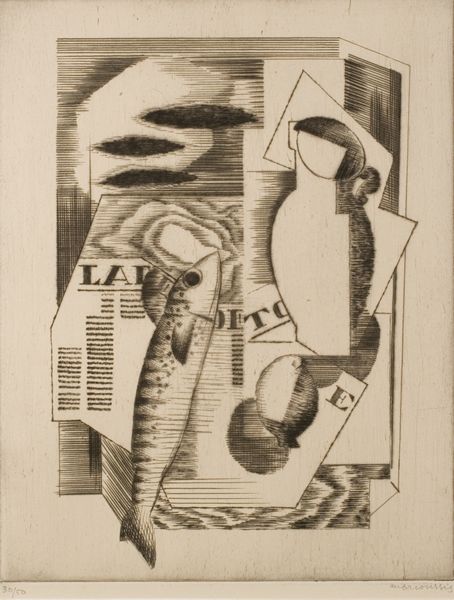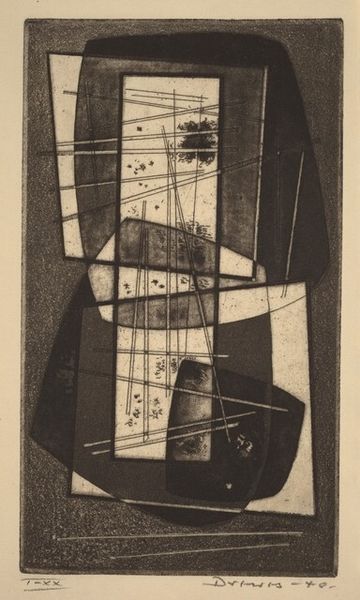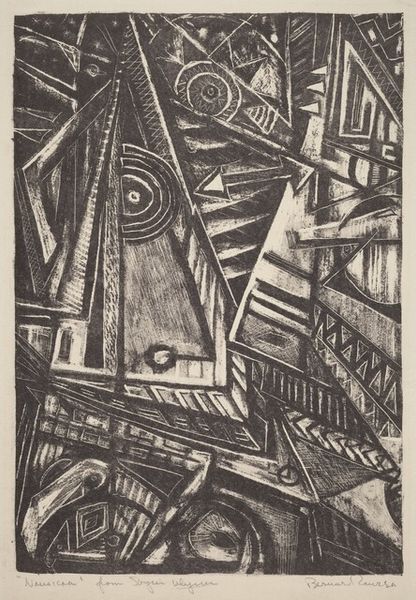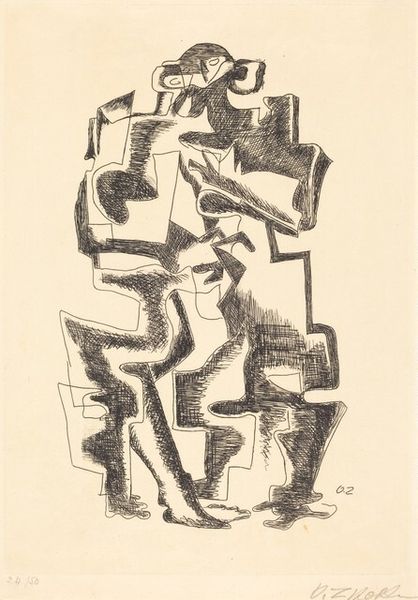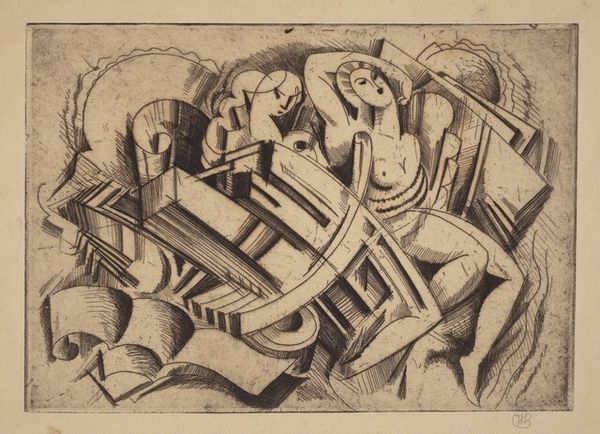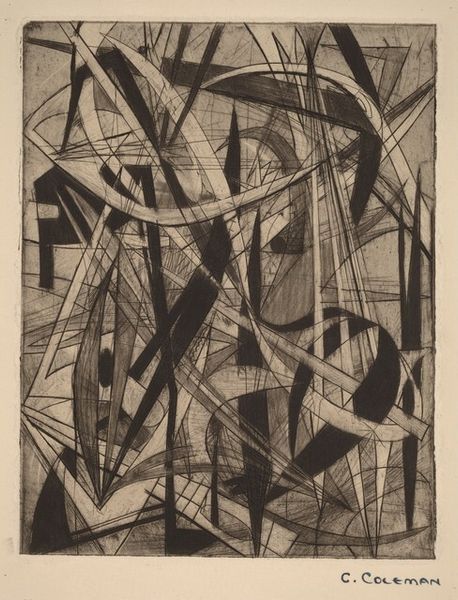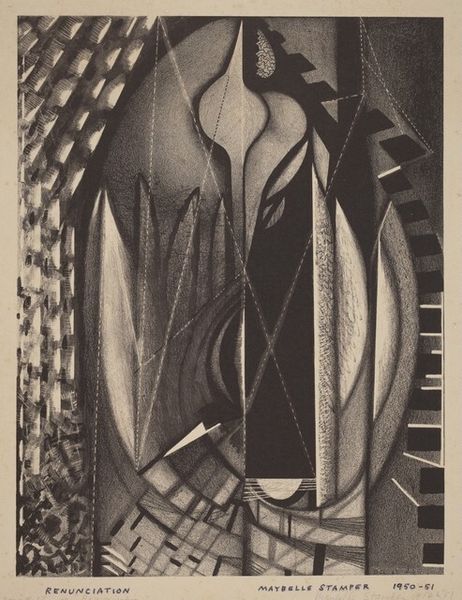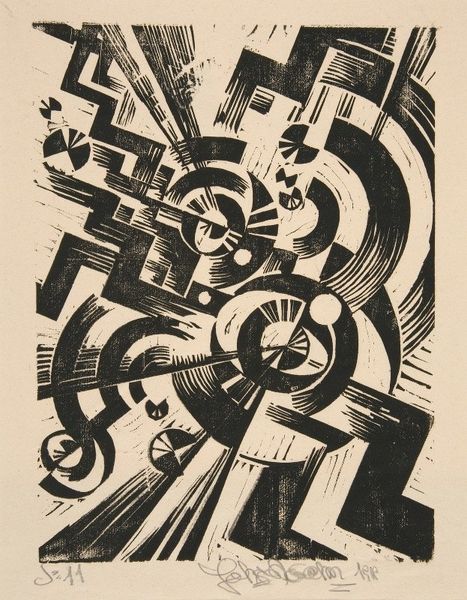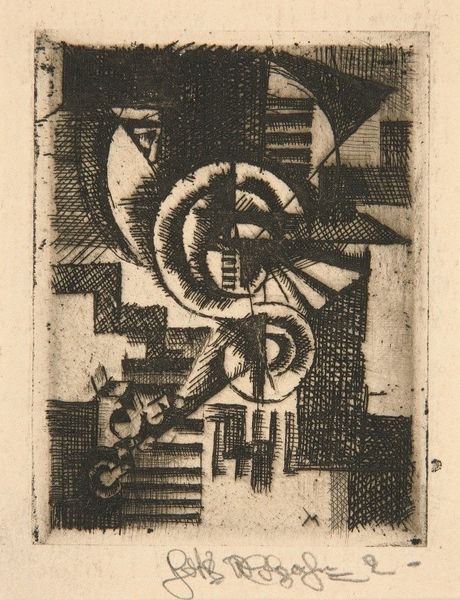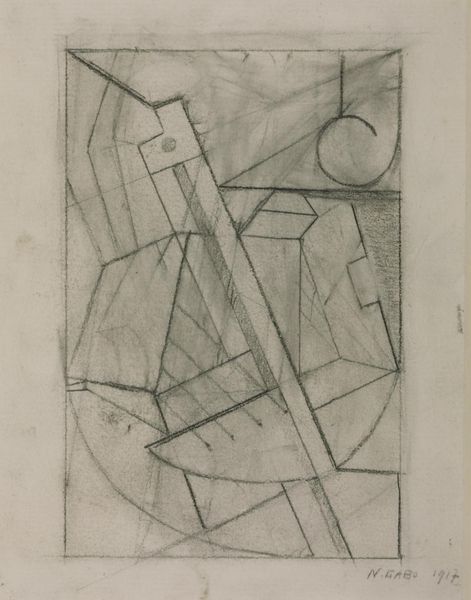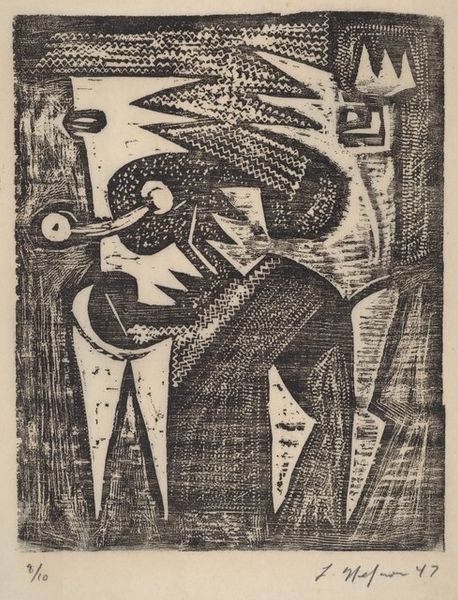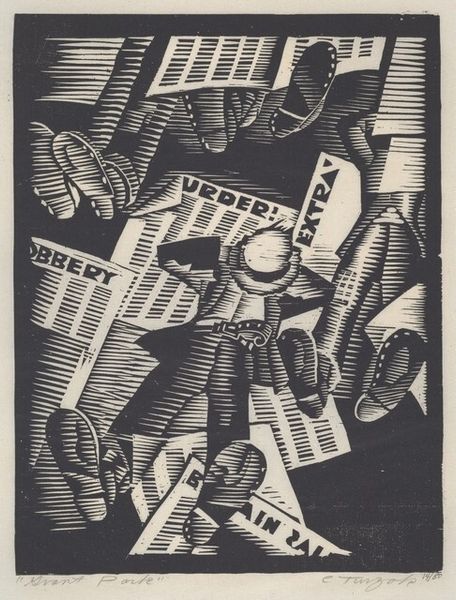
print, etching
#
cubism
# print
#
etching
#
abstract
#
geometric
Copyright: Public Domain: Artvee
Editor: This is "Le Comptoir," an etching by Louis Marcoussis from 1920. I find the geometric forms quite intriguing, like fractured reflections. What do you see in this piece? Curator: I see a representation of early 20th-century Parisian social life, beyond just still life. Consider the title "Le Comptoir," suggesting a bar counter. How might this scene, rendered in the fragmented style of Cubism, speak to the changing identities and social structures of the time? Editor: So, the fragmented style isn’t just about aesthetics? Curator: Exactly! Think about it. The traditional notions of identity and social norms were being questioned after the first World War, with seismic shifts in gender roles and class structures. Cubism, with its fractured perspective, could be seen as a visual metaphor for these shattered realities and emerging social identities. Editor: I see. The "VINS" label on the etching suddenly feels more pointed, doesn’t it? Like it's commenting on consumer culture. Curator: Precisely. Marcoussis places these everyday objects like fragments of evidence in dialogue, prompting us to consider their cultural and social meanings. Could it be interpreted as a subtle critique of the growing commercialisation and its effects on people's perception of community? Editor: That gives me so much to think about – art reflecting shifts in social identities and commercial culture of its time. Thanks for illuminating that, Curator. Curator: Absolutely! Remember, art offers us a space to question, analyse and reimagine our understanding of social structures and personal experience through a critical lens.
Comments
No comments
Be the first to comment and join the conversation on the ultimate creative platform.
